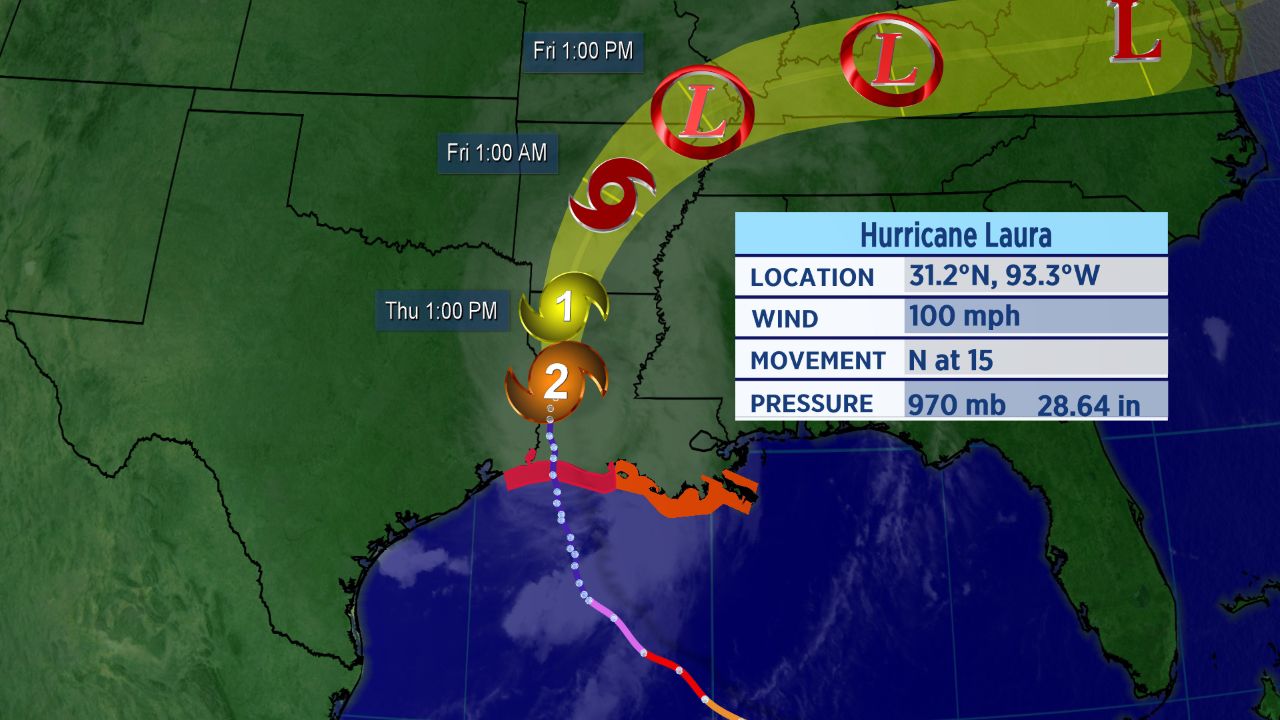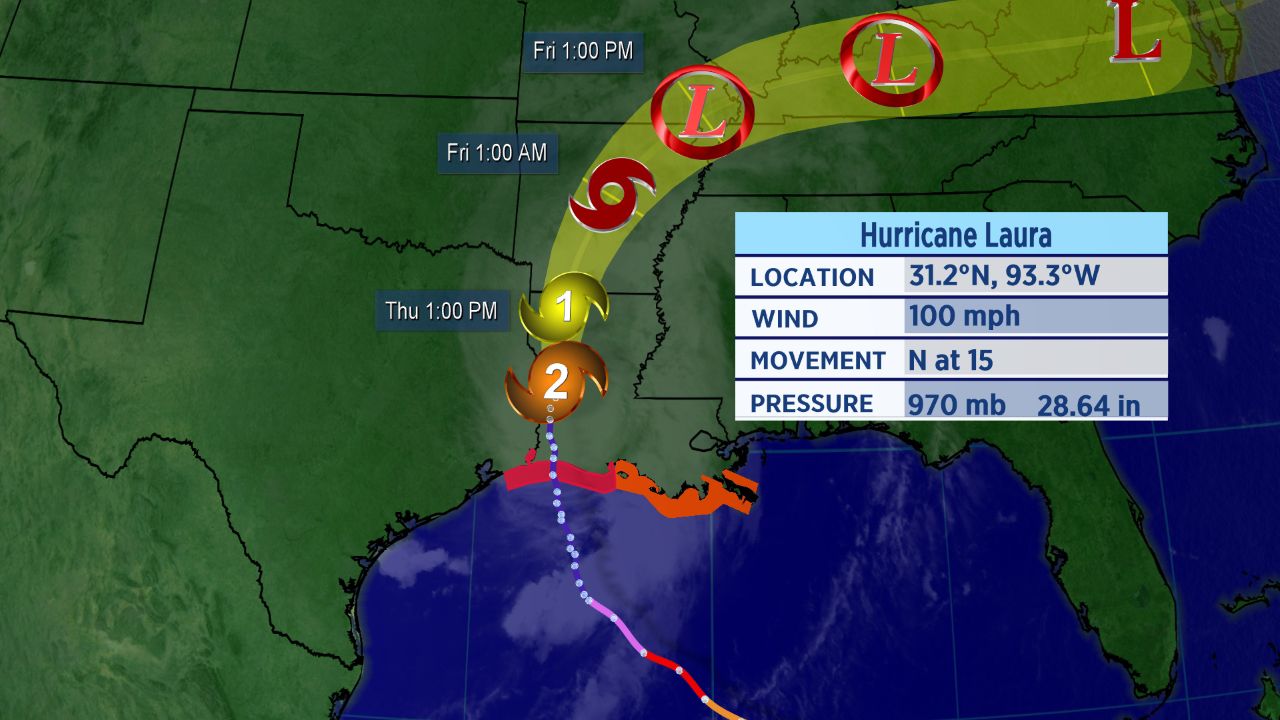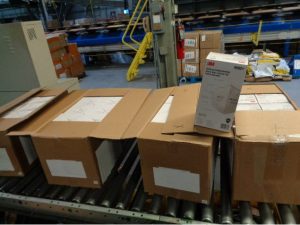Hurricane Laura made landfall over Cameron, Louisiana early on Thursday morning as a powerful Category 4 storm, making it one of the strongest hurricanes to make a U.S. landfall in recent memory.
Storm surge was expected to be 20 or more feet high in impacted areas, potentially bringing an “unsurvivable” storm surge for portions of southwest Louisiana and far southeastern Texas. Daylight will begin to show the severity and extent of the damage.
Laura Makes Landfall, Impacts Spread Inland
Laura officially made landfall as a high-end Category 4 hurricane at 1 a.m. CT on Thursday morning near Cameron, Louisiana, making it the strongest hurricane to make landfall on Louisiana since 1856.
Laura’s maximum sustained winds were estimated to be 150 mph, putting the storm into rare territory in terms of landfalling U.S. hurricanes.
Wind speeds up to 127 mph were recorded in Cameron as Laura’s northern eyewall moved through the city early on Thursday morning. Nearby Lake Charles, Louisiana recorded a wind gust of 133 mph on Thursday morning as well.
Hurricane warnings along the coast have been changed to tropical storm warnings as the storm moves inland, running from High Island, Texas to the mouth of the Mississippi River. However, flooding from storm surge and heavy rain will remain dangerous, particularly in southern Louisiana.
On Wednesday morning, the National Hurricane Center referred to the storm surge threat from Laura as “unsurvivable.” Up to 20 feet of storm surge was expected to flood much of southwestern Louisiana and far southeastern Texas.
Flooding could spread as far as 40 miles inland and is not expected to recede for days.
The governors of both Lousiana and Texas preemptively declared disaster orders.

Forecast cone for Hurricane Laura.
While the storm’s winds have begun to weaken as it moves over land, hurricane-force wind gusts could extend over 100 miles inland, posing a considerable threat to life and property.
Laura is a large hurricane, so strong winds will extend far from the center and beyond the forecast cone. Hurricane-force winds reach as far as 60 miles from the storm’s center, and tropical storm-force winds are up to 175 miles away.
The threat of excessive rain and flooding today reaches as far north as Arkansas.
You can track the storm on the ground by monitoring webcams across the impacted region.
Category 4 Landfalls Are Rare
Since 1851, only 26 hurricanes of a Category 4 or 5 strength have made landfall on the continental United States. That means that a Category 4 or 5 landfall on the United States takes place only once every six or seven years.
Since 1851, Louisiana has had only three Category 4s make landfall, according to Colorado State Univeristy hurricane researcher Dr. Phil Klotzbach.
No Category 5s on record have hit the state, according to Klotzbach.
Since 1894, Louisiana has only seen one Category 4 landfall, Hurricane Betsy back in 1965.
Klotzbach also noted that Laura is the strongest August Gulf of Mexico hurricane since Hurricane Katrina in 2005.
Setting Records
Laura became the earliest “L” named storm to ever form in the Atlantic, and an M-named storm had never formed in the month of August in the Atlantic before Marco.
These storms follow what has already been a record-setting season in the Atlantic.
With 13 storms already this year, this is the fastest start to an Atlantic hurricane season in recorded history. The climatological peak of hurricane season is in mid-September.
With Marco and Laura making landfall, the tally is now up to seven.
As Laura continues to hit parts of the Gulf Coast region hard, here are five things you might not know about hurricanes.




